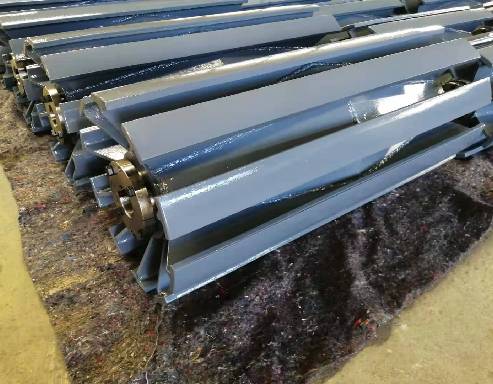 Afrikaans
Afrikaans  Albanian
Albanian  Amharic
Amharic  Arabic
Arabic  Armenian
Armenian  Azerbaijani
Azerbaijani  Basque
Basque  Belarusian
Belarusian  Bengali
Bengali  Bosnian
Bosnian  Bulgarian
Bulgarian  Catalan
Catalan  Cebuano
Cebuano  Corsican
Corsican  Croatian
Croatian  Czech
Czech  Danish
Danish  Dutch
Dutch  English
English  Esperanto
Esperanto  Estonian
Estonian  Finnish
Finnish  French
French  Frisian
Frisian  Galician
Galician  Georgian
Georgian  German
German  Greek
Greek  Gujarati
Gujarati  Haitian Creole
Haitian Creole  hausa
hausa  hawaiian
hawaiian  Hebrew
Hebrew  Hindi
Hindi  Miao
Miao  Hungarian
Hungarian  Icelandic
Icelandic  igbo
igbo  Indonesian
Indonesian  irish
irish  Italian
Italian  Japanese
Japanese  Javanese
Javanese  Kannada
Kannada  kazakh
kazakh  Khmer
Khmer  Rwandese
Rwandese  Korean
Korean  Kurdish
Kurdish  Kyrgyz
Kyrgyz  Lao
Lao  Latin
Latin  Latvian
Latvian  Lithuanian
Lithuanian  Luxembourgish
Luxembourgish  Macedonian
Macedonian  Malgashi
Malgashi  Malay
Malay  Malayalam
Malayalam  Maltese
Maltese  Maori
Maori  Marathi
Marathi  Mongolian
Mongolian  Myanmar
Myanmar  Nepali
Nepali  Norwegian
Norwegian  Norwegian
Norwegian  Occitan
Occitan  Pashto
Pashto  Persian
Persian  Polish
Polish  Portuguese
Portuguese  Punjabi
Punjabi  Romanian
Romanian  Russian
Russian  Samoan
Samoan  Scottish Gaelic
Scottish Gaelic  Serbian
Serbian  Sesotho
Sesotho  Shona
Shona  Sindhi
Sindhi  Sinhala
Sinhala  Slovak
Slovak  Slovenian
Slovenian  Somali
Somali  Spanish
Spanish  Sundanese
Sundanese  Swahili
Swahili  Swedish
Swedish  Tagalog
Tagalog  Tajik
Tajik  Tamil
Tamil  Tatar
Tatar  Telugu
Telugu  Thai
Thai  Turkish
Turkish  Turkmen
Turkmen  Ukrainian
Ukrainian  Urdu
Urdu  Uighur
Uighur  Uzbek
Uzbek  Vietnamese
Vietnamese  Welsh
Welsh  Bantu
Bantu  Yiddish
Yiddish  Yoruba
Yoruba  Zulu
Zulu Analysis of Bearing Housing Price Trends and Market Influences in the Industrial Sector
Understanding Bearing Housing Prices Factors and Trends
Bearing housing, a critical component in various industrial applications, plays a vital role in the functioning of machinery by providing a stable and secure environment for bearings. The prices of bearing housings are influenced by several factors, including material composition, manufacturing techniques, market demand, and global economic conditions. This article delves into these elements to understand the pricing trends associated with bearing housings.
Material Composition
One of the primary factors affecting bearing housing prices is the material used in its production. Common materials for bearing housings include cast iron, cast steel, and various grades of alloy steel. Each material comes with its unique properties, affecting its durability, weight, and, ultimately, the cost. For instance, while cast iron is typically less expensive due to its abundance and ease of manufacturing, alloy steels can be significantly more costly due to their enhanced strength and resistance to wear and corrosion. Manufacturers often choose the most suitable material based on the intended application, which directly impacts the price.
Manufacturing Techniques
The method of manufacturing bearing housings also plays a crucial role in pricing. Traditional methods like casting and machining can result in lower costs, but they may not always meet the precision and durability requirements of modern machinery. Advanced manufacturing techniques such as 3D printing and precision CNC machining are becoming more popular, albeit at a higher price point. These technologies allow for greater customization and efficiency, which can justify a higher cost, especially for specialized applications.
Market Demand and Supply Chain Dynamics
bearing housing price

The demand for bearing housings is closely tied to the overall health of the manufacturing and industrial sectors. Industries such as automotive, aerospace, and renewable energy rely heavily on efficient machinery, driving up the demand for high-quality bearings and housing. Economic fluctuations, such as recessions or booms, can greatly impact these markets, leading to volatile prices. Additionally, supply chain dynamics, including the availability of raw materials and shipping costs, can also influence prices. Global events, such as pandemics or geopolitical tensions, can disrupt supply chains, leading to increased costs for manufacturers and, consequently, the end consumers.
Global Economic Conditions
The global economy significantly influences the price of bearing housings. Currency fluctuations, trade policies, and international tariffs can all play a role. For example, a strong currency might make imported bearing housings more expensive, while a weaker currency could lower prices for domestic producers competing with foreign manufacturers. Ultimately, manufacturers must navigate these economic landscapes, often adjusting their pricing strategies accordingly.
Trends and Future Outlook
Looking forward, the trend in bearing housing prices is expected to shift due to ongoing technological advancements and sustainability initiatives. There is a growing demand for eco-friendly materials and manufacturing processes, which may lead to increased production costs but offer long-term savings in terms of energy efficiency and reduced waste.
Furthermore, as industries become more automated and reliant on advanced technologies, the push for high-performance bearing housings will likely continue to grow. This demand for high-quality, durable, and precise components could exert upward pressure on prices.
In conclusion, bearing housing prices are influenced by a myriad of factors, from material choices and manufacturing techniques to market dynamics and economic conditions. As industries evolve and new technologies emerge, understanding these influences is crucial for manufacturers and consumers alike. Staying informed about pricing trends can help businesses make more strategic decisions when it comes to procurement and production planning, ultimately enhancing operational efficiency and competitiveness in the marketplace.
-
Revolutionizing Conveyor Reliability with Advanced Rubber Lagging PulleysNewsJul.22,2025
-
Powering Precision and Durability with Expert Manufacturers of Conveyor ComponentsNewsJul.22,2025
-
Optimizing Conveyor Systems with Advanced Conveyor AccessoriesNewsJul.22,2025
-
Maximize Conveyor Efficiency with Quality Conveyor Idler PulleysNewsJul.22,2025
-
Future-Proof Your Conveyor System with High-Performance Polyurethane RollerNewsJul.22,2025
-
Driving Efficiency Forward with Quality Idlers and RollersNewsJul.22,2025





























